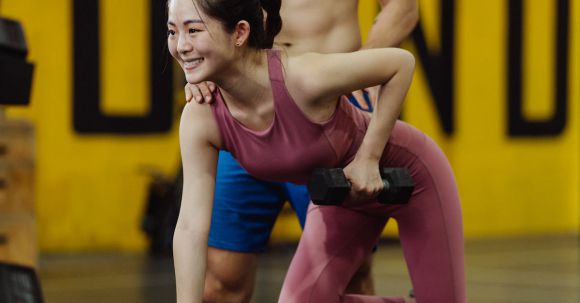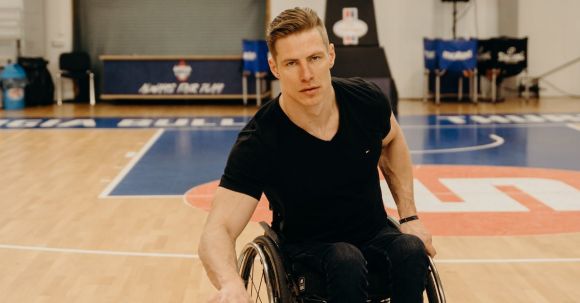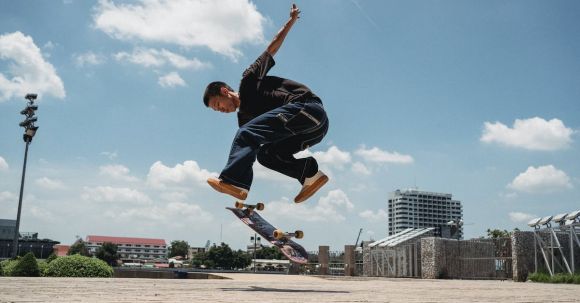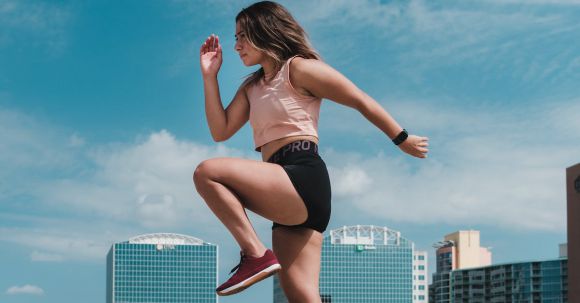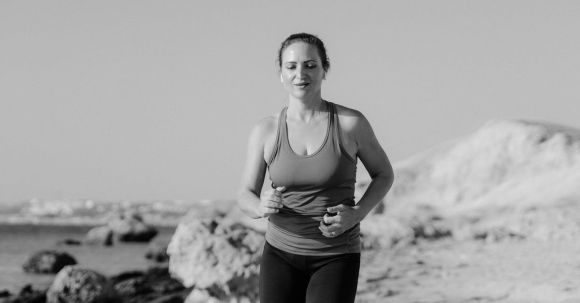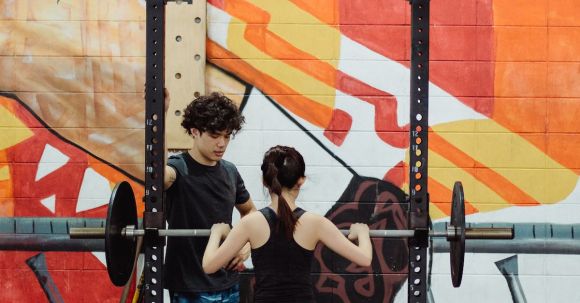Every athlete knows that to excel in their chosen sport, they need to be in peak physical condition. While general fitness is important, it is equally crucial to engage in sports-specific workouts that target the specific muscles and skills required for your sport. By focusing on these specific areas, you can build a strong foundation for success. In this article, we will explore the importance of sports-specific workouts and provide some tips on how to incorporate them into your training routine.
Sports-specific training
When it comes to improving your athletic ability, one-size-fits-all training methods simply won't cut it. To truly excel in your chosen sport, you need to engage in sports-specific training. This type of training focuses on the specific skills and movements required in your sport, helping you to develop the strength, speed, and agility needed to perform at your best. In this article, we will explore the benefits of sports-specific training and provide tips on how to incorporate it into your fitness routine.
Understanding Sports-specific Training
Sports-specific training involves tailoring your workouts to mimic the movements and demands of your sport. By replicating the specific actions and energy systems used in your sport, you can optimize your training to improve performance. This type of training goes beyond general fitness and targets the muscle groups and skills necessary for success in your sport.Benefits of Sports-specific Training
1. Improved Performance: Sports-specific training allows you to focus on the specific skills and movements needed in your sport, leading to improved performance. By training in a way that directly translates to your sport, you can enhance your speed, power, and endurance, giving you an edge over your competition. 2. Injury Prevention: By targeting the muscle groups and movements used in your sport, sports-specific training can help prevent injuries. Strengthening the muscles that are most vulnerable in your sport and improving flexibility and mobility can reduce the risk of strains, sprains, and other common sports injuries. 3. Enhanced Technique: Sports-specific training allows you to refine your technique and improve your form. By practicing the specific movements and skills required in your sport, you can develop better coordination, balance, and body control, resulting in more efficient and effective performance.Tips for Incorporating Sports-specific Training
1. Analyze Your Sport: Begin by analyzing the specific skills, movements, and energy systems used in your sport. Understanding the demands of your sport will help you identify the areas that require the most focus in your training. 2. Focus on Strength and Power: Many sports require a combination of strength and power. Incorporate exercises that target the specific muscle groups used in your sport, such as squats and deadlifts for explosive power in lower body-dominant sports or shoulder presses and pull-ups for upper body-dominant sports. 3. Improve Speed and Agility: Speed and agility are crucial in many sports. Incorporate drills that focus on quickness, change of direction, and reaction time. This could include ladder drills, cone drills, and shuttle runs to improve your agility and speed. 4. Practice Sport-specific Skills: Allocate time in your training sessions to practice the specific skills and movements required in your sport. This could involve shooting drills for basketball players, passing drills for soccer players, or serve and volley drills for tennis players. 5. Include Conditioning Exercises: Conditioning is essential for endurance-based sports. Incorporate exercises that mimic the energy systems used in your sport, such as interval training or high-intensity circuit training. This will help improve your cardiovascular fitness and stamina. Conclusion: Taking your athletic ability to the next level requires more than just general fitness training. Sports-specific training is the key to unlocking your full potential. By tailoring your workouts to address the specific skills, movements, and energy systems of your sport, you can improve your performance, prevent injuries, and enhance your technique. So, whether you're a basketball player, soccer player, or track athlete, make sports-specific training a priority in your fitness routine and watch your athletic ability soar.
Every athlete knows that in order to excel in their chosen sport, they need to push their bodies to the limits. While general fitness training is important, sports-specific training is the key to unlocking your full potential. By tailoring your workouts to mimic the movements and demands of your sport, you can take your athleticism to the next level. In this article, we will explore the benefits of sports-specific training and provide tips on how to incorporate it into your routine.
Understanding the Benefits of Sports-specific Training
Sports-specific training is designed to enhance the specific skills and physical attributes required for a particular sport. By focusing on the specific movements, energy systems, and muscle groups used in your sport, you can improve your performance and reduce the risk of injury. Here are some key benefits of sports-specific training: 1. Improved Performance: By training the movements and skills specific to your sport, you can enhance your performance on the field or court. For example, a basketball player may focus on agility drills, vertical jumps, and shooting techniques to improve their game. 2. Injury Prevention: Sports-specific training helps to strengthen the muscles and joints used in your sport, reducing the risk of common injuries. By targeting weak areas and improving flexibility, you can enhance your body's ability to withstand the demands of your sport. 3. Enhanced Power and Speed: Sports-specific training can help you develop explosive power and speed, which are crucial in many sports. By incorporating exercises that mimic the quick bursts of movement required in your sport, you can improve your reaction time and overall speed.Incorporating Sports-specific Training into Your Routine
Now that you understand the benefits, it's time to incorporate sports-specific training into your routine. Here are some tips to get you started: 1. Analyze Your Sport: Take the time to analyze your sport and identify the specific skills, movements, and energy systems required. This will help you tailor your training program to focus on these areas. 2. Consult a Coach or Trainer: If you're unsure how to design a sports-specific training program, consider consulting a coach or trainer who specializes in your sport. They can provide guidance and create a customized plan based on your goals and abilities. 3. Mimic Sport-specific Movements: Incorporate exercises that mimic the movements used in your sport. For example, a golfer may focus on rotational exercises to improve their swing, while a soccer player may incorporate drills that simulate game situations. 4. Include Strength and Conditioning: While sports-specific movements are important, don't neglect overall strength and conditioning. Include exercises that target the major muscle groups and improve cardiovascular fitness to support your sport-specific training. 5. Progression and Variation: As with any training program, it's important to gradually increase the intensity and vary the exercises to continue challenging your body. This will prevent plateaus and keep your training sessions interesting.Conclusion: Elevate Your Performance with Sports-specific Training
If you're serious about taking your athleticism to the next level, sports-specific training is a must. By tailoring your workouts to mimic the movements and demands of your sport, you can improve your performance, reduce the risk of injury, and enhance your overall athletic abilities. Take the time to analyze your sport, consult a coach or trainer, and incorporate sport-specific movements into your routine. With dedication and consistency, you'll be well on your way to reaching new heights in your athletic journey.
Sports-specific training is the key to unlocking your full potential as an athlete. Whether you're a professional athlete or a weekend warrior, tailoring your training to the specific demands of your chosen sport can make a world of difference in your performance. In this article, we will explore the importance of sports-specific training and provide tips on how to incorporate it into your workout routine.
Understanding the Demands of Your Sport
Before diving into sports-specific training, it's important to have a clear understanding of the demands of your sport. Each sport requires specific skills, physical attributes, and movement patterns. For example, a basketball player needs explosive power, agility, and quick reflexes, while a long-distance runner needs endurance and cardiovascular fitness. By analyzing the demands of your sport, you can identify the areas that need improvement and design a training program that targets those specific needs.Focus on Functional Movements
Sports-specific training focuses on improving the functional movements required by your sport. Functional movements are those that mimic the actions you perform during your sport. For example, a tennis player may incorporate exercises that simulate the motions of a forehand or backhand swing. By training these movements, you can improve your technique, strength, and coordination, leading to better performance on the field or court.Incorporate Sport-Specific Drills
In addition to functional movements, incorporating sport-specific drills into your training can take your performance to the next level. These drills are designed to replicate the specific situations and challenges you'll encounter during competition. For example, a soccer player may practice shooting on goal from various positions, or a golfer may work on their putting technique. By repeatedly performing these drills, you can improve your skills, build muscle memory, and develop the mental toughness needed to excel in your sport.Balance Strength and Conditioning
Sports-specific training should also include a balance of strength and conditioning exercises. Strength training helps build the muscles needed for explosive power and stability, while conditioning exercises improve cardiovascular fitness and endurance. Depending on your sport, you may need to emphasize one area more than the other. For example, a football player may focus more on strength training, while a marathon runner may prioritize conditioning. However, it's important not to neglect either aspect, as both are crucial for optimal performance.Seek Professional Guidance
To get the most out of your sports-specific training, it's beneficial to seek guidance from a professional. A qualified coach or trainer can assess your strengths and weaknesses, design a customized training program, and provide feedback and support along the way. They can also help you avoid common pitfalls and injuries associated with improper training techniques. Investing in professional guidance can significantly enhance your training and help you reach your full potential as an athlete.Stay Consistent and Patient
Sports-specific training is not a quick fix or overnight solution. It requires consistency, patience, and perseverance. It's important to stick to your training program, even when progress seems slow or setbacks occur. Remember that improvement takes time, and every small step forward brings you closer to your goals. Stay focused, stay motivated, and trust the process. In conclusion, mastering your sport requires sports-specific training. By understanding the demands of your sport, focusing on functional movements, incorporating sport-specific drills, balancing strength and conditioning, seeking professional guidance, and staying consistent and patient, you can unlock your full potential as an athlete. So, lace up your shoes, grab your gear, and get ready to take your game to the next level through sports-specific training.
Every athlete dreams of reaching their peak performance level in their chosen sport. Whether you're a professional or an amateur, sports-specific training can be the key to unlocking your full potential. By tailoring your workouts to mimic the movements and demands of your sport, you can enhance your skills, prevent injuries, and take your performance to the next level. In this article, we will explore the benefits of sports-specific training and provide some tips on how to incorporate it into your routine.
Understanding Sports-specific Training
Sports-specific training is a targeted approach to conditioning that focuses on the specific requirements of your sport. It involves exercises and drills that closely mimic the movements, skills, and energy systems used in your chosen activity. Rather than focusing solely on general fitness or strength training, sports-specific training hones in on the specific skills and physical attributes needed for success in your sport.Benefits of Sports-specific Training
1. Enhanced Performance: By training in a way that closely mirrors the demands of your sport, you can improve your performance in key areas such as speed, agility, power, and endurance. Sports-specific exercises help to develop the specific muscle groups and movement patterns required for optimal performance. 2. Injury Prevention: One of the biggest advantages of sports-specific training is its ability to reduce the risk of injuries. By targeting the muscles and joints most susceptible to injury in your sport, you can strengthen and stabilize them, making you less prone to common injuries. Additionally, sports-specific training can help improve your balance, coordination, and proprioception, all of which play a crucial role in injury prevention.Incorporating Sports-specific Training into Your Routine
1. Identify Key Skills: Start by identifying the key skills and movements required in your sport. Is it speed and agility, power and explosiveness, or endurance and stamina? Understanding the specific demands of your sport will help you tailor your training accordingly. 2. Mimic Sport-specific Movements: Once you've identified the key skills, design exercises and drills that closely mimic the movements involved. For example, if you're a tennis player looking to improve your forehand, practice shadow swings and footwork drills that simulate game-like situations. 3. Train Energy Systems: Different sports rely on different energy systems. For example, endurance sports like long-distance running primarily utilize the aerobic energy system, while explosive sports like sprinting rely on the anaerobic energy system. Incorporate exercises that target the specific energy systems used in your sport to improve your overall performance. 4. Periodization: To maximize the benefits of sports-specific training, incorporate periodization into your routine. Periodization involves dividing your training program into specific phases, each with a different focus. This allows for proper recovery, prevents overtraining, and ensures continued progress over time.Conclusion: Unleash Your Full Potential
Sports-specific training is a game-changer when it comes to improving your performance in your chosen sport. By tailoring your workouts to mimic the movements and demands of your sport, you can enhance your skills, prevent injuries, and unleash your full potential. Remember to identify the key skills, mimic sport-specific movements, train energy systems, and incorporate periodization into your routine. With dedication and consistency, sports-specific training can take your performance to new heights. So, lace up your shoes, grab your equipment, and get ready to excel like never before!
Every athlete knows that training is an essential part of improving performance. However, not all training methods are created equal. To truly excel in your sport, it is crucial to incorporate sports-specific training into your routine. This type of training focuses on the specific movements, skills, and energy systems required for your chosen sport. By tailoring your training to match the demands of your sport, you can optimize your performance and take your skills to the next level.
Understanding Sports-specific Training
Sports-specific training involves designing a training program that closely mimics the movements and intensity of your sport. Whether you are a soccer player, a tennis player, or a swimmer, each sport has its own unique demands. By identifying these demands and incorporating them into your training, you can better prepare your body for the challenges you will face during competition.Benefits of Sports-specific Training
1. Improved Performance: By training in a way that closely resembles the movements and energy systems used in your sport, you can improve your performance on the field or court. Sports-specific exercises help to develop the specific muscle groups needed for your sport, as well as enhance your speed, agility, and endurance. 2. Injury Prevention: Sports-specific training can also help to prevent injuries. By strengthening the muscles and joints that are most susceptible to injury in your sport, you can reduce your risk of getting hurt. Additionally, by practicing sport-specific movements, you can improve your technique, which can also decrease the likelihood of injury. 3. Mental Preparation: Sports-specific training not only prepares you physically but also mentally. By regularly practicing the movements and skills required in your sport, you can build confidence and develop a better understanding of the game. This mental preparation can give you a competitive edge and help you make better decisions on the field.Designing a Sports-specific Training Program
To design an effective sports-specific training program, it is important to consider the specific demands of your sport. Here are some key factors to consider: 1. Movement Patterns: Identify the primary movement patterns used in your sport. For example, a basketball player may focus on lateral movements, jumping, and quick changes of direction. 2. Energy Systems: Determine which energy systems are predominantly used in your sport. This will help you design training exercises that target those specific energy systems. For example, a long-distance runner would focus on aerobic training to improve endurance. 3. Muscles Used: Identify the major muscle groups used in your sport and design exercises that target those muscles. For example, a golfer might focus on core and rotational exercises to improve their swing. 4. Skill Development: Incorporate drills and exercises that mimic the skills required in your sport. This could include practicing shooting techniques for a basketball player or working on footwork for a soccer player. 5. Periodization: Consider the timing of your training program and incorporate periods of intensity and recovery. This will help you avoid overtraining and maximize your performance during competitions. In conclusion, sports-specific training is a vital component of optimizing athletic performance. By tailoring your training to match the specific demands of your sport, you can enhance your skills, prevent injuries, and mentally prepare for competition. Take the time to design a training program that focuses on movement patterns, energy systems, muscles used, skill development, and periodization. By doing so, you will be on your way to reaching your full potential as an athlete. So, lace up your shoes, grab your racket, or dive into the pool, and get ready to take your performance to new heights!Introduction
In order to excel in any sport, it is crucial to train not only the general aspects of fitness but also the specific skills required for that particular sport. Sports-specific exercises are designed to target the specific muscles, movements, and energy systems used in a specific sport, allowing athletes to maximize their performance on the field or court. Whether you are a professional athlete or simply enjoy playing sports recreationally, incorporating sports-specific exercises into your training routine can help you unleash your full potential.Improving Speed and Agility
Speed and agility are essential components of many sports, such as soccer, basketball, and tennis. To enhance your speed, exercises like sprint intervals and ladder drills can help develop explosive power and quickness in your legs. Lateral movements, such as side shuffles and cone drills, can improve your agility and change of direction.Building Strength and Power
Strength and power are crucial for sports like football, rugby, and weightlifting. Incorporating exercises like squats, deadlifts, and bench presses into your training routine can help build overall strength. Additionally, explosive movements like power cleans and kettlebell swings can improve power output, allowing you to generate more force in your sport-specific movements.Enhancing Endurance and Stamina
Endurance and stamina are vital for sports like long-distance running, cycling, and swimming. To improve your aerobic capacity, exercises such as long-distance running or cycling can be incorporated into your training regimen. High-intensity interval training (HIIT) can also be beneficial for enhancing both aerobic and anaerobic endurance, simulating the demands of sports that require bursts of intense activity followed by periods of recovery.Developing Coordination and Balance
Coordination and balance are essential for activities like gymnastics, figure skating, and martial arts. Exercises that focus on proprioception, such as single-leg balance exercises and stability ball drills, can help improve your balance and body awareness. Additionally, incorporating exercises that require coordination, such as ladder drills and cone drills, can enhance your ability to move fluidly and perform complex movements with precision.Preventing Injuries
Injuries can hinder an athlete's progress and performance. Sports-specific exercises can help prevent injuries by strengthening the muscles and joints used in a particular sport. For example, soccer players can benefit from exercises that target the muscles around the knees and ankles to reduce the risk of common soccer-related injuries like ACL tears and ankle sprains. Similarly, basketball players can focus on exercises that improve ankle stability and jumping mechanics to prevent ankle and knee injuries.Conclusion: Unleash Your Potential
Sports-specific exercises are essential for athletes looking to reach their full potential in their chosen sport. By targeting the specific muscles, movements, and energy systems used in a particular sport, these exercises can improve speed, agility, strength, endurance, coordination, and balance. Additionally, they can help prevent injuries, allowing athletes to stay in the game and continue performing at their best. Whether you are a professional athlete or a recreational sports enthusiast, incorporating sports-specific exercises into your training routine can help you unleash your true potential on the field or court. So, lace up your shoes, grab your equipment, and get ready to take your performance to the next level with sports-specific exercises.
Whether you're a professional athlete or simply an avid sports enthusiast, incorporating sports-specific exercises into your training routine can give you the competitive edge you need. These exercises are specifically designed to target the muscles and movements required for your chosen sport, helping you improve your performance and reduce the risk of injury. In this article, we will explore some effective sports-specific exercises that can help you take your game to the next level.
1. Basketball: Jump Squats
Basketball requires explosive power and vertical jump ability. Jump squats are a great exercise to improve these skills. Start by standing with your feet shoulder-width apart. Lower into a squat position and then explode upwards, jumping as high as you can. Land softly and immediately go into the next repetition. Aim for 3 sets of 10-12 repetitions, gradually increasing the intensity as you progress.2. Tennis: Lateral Lunges
Tennis involves quick lateral movements and changes in direction. Lateral lunges can help improve your agility and stability on the court. Begin by standing with your feet hip-width apart. Take a wide step to the side, bending the knee of the leading leg while keeping the other leg straight. Push off with the leading leg and return to the starting position. Repeat on the opposite side. Aim for 3 sets of 10-12 repetitions on each leg.3. Soccer: Agility Ladder Drills
Soccer players need to be quick on their feet and have excellent footwork. Agility ladder drills are a fantastic way to improve your speed and coordination. Set up an agility ladder on the ground and perform various footwork exercises such as quick feet, lateral shuffles, and high knees. Aim for 3-4 sets of 30-60 seconds, focusing on maintaining a fast pace and precise footwork.4. Golf: Core Rotations
Golf requires a strong and stable core for generating power and maintaining balance during the swing. Core rotations are an effective exercise to target the muscles involved in the golf swing. Start by standing with your feet shoulder-width apart and hold a medicine ball or a dumbbell with both hands. Rotate your torso to the right, keeping your hips and lower body stable. Return to the starting position and repeat on the other side. Aim for 3 sets of 10-12 repetitions on each side.5. Swimming: Flutter Kicks
Swimming demands strong leg muscles and endurance. Flutter kicks are a fantastic exercise to strengthen your legs and improve your kicking technique. Lie on your back in the water and kick your legs in a fluttering motion, keeping them straight and close together. Focus on generating power from your hips and maintaining a steady rhythm. Aim for 3-4 sets of 30-60 seconds, gradually increasing the duration as your endurance improves. Incorporating sports-specific exercises into your training routine can make a significant difference in your performance. These exercises target the specific muscle groups and movements required for your chosen sport, helping you develop the necessary skills and improve your overall game. Remember to always warm up properly before engaging in any exercise and listen to your body to avoid injury. So, whether you're a basketball player looking to improve your vertical jump or a golfer aiming for a more powerful swing, try incorporating these sports-specific exercises into your training routine. Your dedication and hard work will pay off, and you'll see yourself reaching new heights in your chosen sport. Power up your game and take your performance to the next level with these effective exercises.
Speed and quickness are essential attributes in many sports. Whether you're a soccer player trying to outrun defenders, a basketball player looking to blow past your opponent, or a tennis player aiming to react swiftly to every shot, improving your speed and quickness can significantly elevate your performance. By incorporating sports-specific training into your workout routine, you can maximize your potential and take your game to the next level.
The Importance of Sports-specific Training
Sports-specific training refers to exercises and drills that mimic the movements and demands of a particular sport. It focuses on developing the specific muscles, skills, and energy systems required for optimal performance. Unlike general fitness training, which improves overall strength and endurance, sports-specific training hones in on the specific requirements of your chosen sport.Benefits of Sports-specific Training for Speed and Quickness
Sports-specific training offers several benefits for enhancing speed and quickness: 1. Improved Muscle Coordination: By engaging in movements that replicate those used in your sport, you can enhance the coordination between your muscles. This improved coordination allows for more efficient movements, resulting in increased speed and quickness. 2. Enhanced Reaction Time: Sports-specific training often includes drills that require quick reaction times. By practicing these drills regularly, you can improve your ability to react swiftly to changing situations, giving you a competitive edge on the field or court. 3. Increased Power and Explosiveness: Many sports-specific exercises focus on developing explosive power, which is crucial for quick bursts of speed and rapid changes in direction. By incorporating exercises that target power and explosiveness, you can enhance your speed and quickness on the field.Sports-specific Training Techniques
Here are some effective sports-specific training techniques to enhance your speed and quickness: 1. Interval Training: Interval training involves alternating between high-intensity exercises and periods of rest or lower intensity. This type of training is excellent for improving speed and quickness, as it simulates the stop-and-start nature of many sports. Incorporate short sprints, agility ladder drills, and shuttle runs into your interval training sessions. 2. Plyometrics: Plyometric exercises focus on explosive movements that enhance power and speed. Box jumps, medicine ball throws, and lateral bounds are just a few examples of plyometric exercises that can significantly improve your speed and quickness. 3. Sport-specific Drills: Practice drills that closely mimic the movements and demands of your sport. For example, basketball players can work on dribbling and shooting drills that require quick changes in direction and reaction times. Soccer players can benefit from ladder drills that improve footwork and agility. 4. Strength Training: While speed and quickness are primarily dependent on technique and coordination, strength training plays a vital role in supporting these attributes. Focus on exercises that target the muscles used during your sport, such as squats, lunges, and deadlifts. Remember to maintain proper form and gradually increase the weight to avoid injury. Incorporating sports-specific training into your workout routine is essential for enhancing your speed and quickness. By focusing on the specific demands of your sport and incorporating targeted exercises and drills, you can maximize your athletic potential. Remember to consult with a fitness professional or coach to ensure you are using proper techniques and to tailor your training program to your specific needs. With dedication and consistency, you'll be well on your way to becoming a faster and quicker athlete.
Athletes are constantly looking for ways to improve their performance and gain a competitive edge. While regular exercise is important for overall fitness, sports-specific exercises can take your training to the next level. By targeting the specific muscles and movements used in your sport, you can enhance your skills and achieve greater success on the field, court, or track. In this article, we will explore the benefits of sports-specific exercises and provide some examples for various sports.
